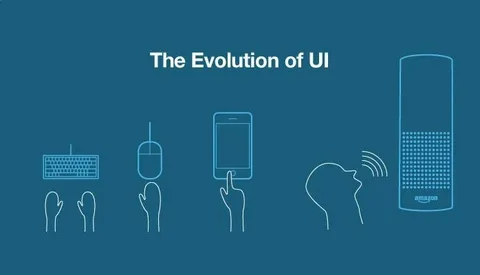Vocals AI systems form the most fascinating applications of artificial intelligence. It constitutes the peak of the symbiosis between 2 branches of AI, one that empowers the machine with the ability to interpret the human voice and the other that enables it to speak in a human voice.
This study will look into the progression of Vocal AI technology, from executing business commands in a simple text form to having fluid conversations that command the future of interaction, communication, and technology.
The Early Days: From Text Commands to Speech Recognition
In the first part of the 2000s, one communicated with computers by typing commands. The technology for voice interaction was primitive, and, more importantly, inaccurate.
IBM’s voice technology, Shoebox, and Dragon NaturallySpeaking software were significant advances, but even they were limited, understanding only a few commands and requiring perfect and clear dictation.
As technology evolves day by day, the ability to teach how artificial intelligence identifies human speech and how it works to improve it.
As technology improved, the ability to teach machines to identify human speech improved. The rise in computational methods, such as ML and neural networks, allows more systems could learn to train on large voice data, improving command recognition and interpretation.
The Breakthrough: Voice Assistants Change the Game
Major advancements happened in the 2010s with the debut of Siri, Alexa, and Google Assistant entering the scene. These systems improved to the point where they could:
- Understand natural language.
- Answer complex questions and hold a conversation.
- Execute commands to control smart devices.
Speaking to a machine became natural and was possible with voice commands. This was the new era of conversational AI, where systems understood and processed higher-level commands and contextual situations.
3. The Rise of Generative Voice Models
The advancements of voice AI technology and systems continued to rise post-2020 with the introduction of new generative AI systems. New systems and models such as OpenAI’s Whisper, ChatGPT voice integration, ElevenLabs, and Meta’s Voicebox could produce human-like voice and speech.
These advanced systems perform deep learning to understand various components of speech, such as tone, emotion, accent, and rhythm, and thus make the digital voice flexible. Moving far from monotone, the AI can laugh, take pauses, and convey emotions, which adds to the interaction.
This innovation has benefited industries such as:
- Entertainment (voice dubbing and animation)
- Customer Service (AI Call Centers)
- Accessibility (Voice Tools for the Visually Impaired)
- Education (AI Tutors and Language Learning)
Applications of Vocal AI:
There are a lot of fields where we can use Vocal AI. The following are given below, including:
- Customer Support Bots (voice-based help desks)
- Healthcare (voice-powered patient data entry)
- Automobiles (voice-controlled navigation systems)
- Smart Assistants (Alexa, Siri, Google Assistant)
- Accessibility Tools (helping visually impaired people use technology)
Ethical Concerns and Challenges
In addition to the numerous benefits, Vocal AI faces adverse ethical issues. Deepfake technology can produce voice clones that can cause identity deception, misinformation, and fraud.
In response, such companies are creating voice watermarks and other forms of identification technology to combat voice synthesis. This frames the innovation to be used responsibly and ethically.
Conclusion
The development of technology in the past few decades can be summarized by the evolution of text-to-speech technology. What was once simple voice commands has become complex, intelligent, and emotive speech.
Vocal AI has evolved past just being a simple tool. It has become a digital companion in the seamless interaction between human and machine. The gap between human and artificial speech will become smaller, which will produce limitless opportunities.
